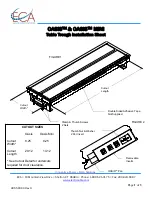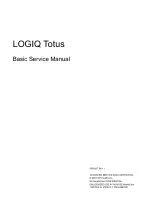
Measurement of Small-current Signals – Measurement System Model and Physical Limitations
74
C
shunt
unwanted capacitance across the cell
C
in
current-measurement circuit’s stray input capacitance
R
in
current-measurement circuit’s stray input resistance
I
in
measurement circuit’s input current
In the ideal current-measurement circuit,
R
in
is infinite while
C
in
and
I
in
are zero. All of the cell current,
I
cell
, flows
through
R
m
.
With an ideal cell and voltage source,
R
shunt
is infinite and
C
shunt
is zero. All the current flowing into the current
measurement circuit comes from
Z
cell
.
The voltage developed across
R
m
is measured by the meter as
V
m
. Given the idealities discussed above, use
Kirchhoff’s and Ohm’s laws to calculate
Z
cell
:
Z
cell
=
E
S
×
R
m
/
V
m
Figure 10-1
Equivalent Measurement Circuit
Icell
C shunt
R shunt
C in
R in
Rm
Unfortunately, technology limits high-impedance measurements because:
Current measurement circuits always have non-zero input capacitance, i.e.,
C
in
> 0.
Infinite
R
in
cannot be achieved with real circuits and materials.
Amplifiers used in the meter have input currents, i.e.,
I
in
> 0.
The cell and the potentiostat create both a non-zero
C
shunt
and a finite
R
shunt
.
Additionally, basic physics limits high-impedance measurements via Johnson noise, which is the inherent noise
in a resistance.
Johnson Noise in
Z
cell
Johnson noise across a resistor represents a fundamental physical limitation. Resistors, regardless of
composition, demonstrate a minimum noise for both current and voltage, per the following equations:
E
= (4
kTR
F
)
1/2
I
= (4
kT
F
/
R
)
1/2
















































